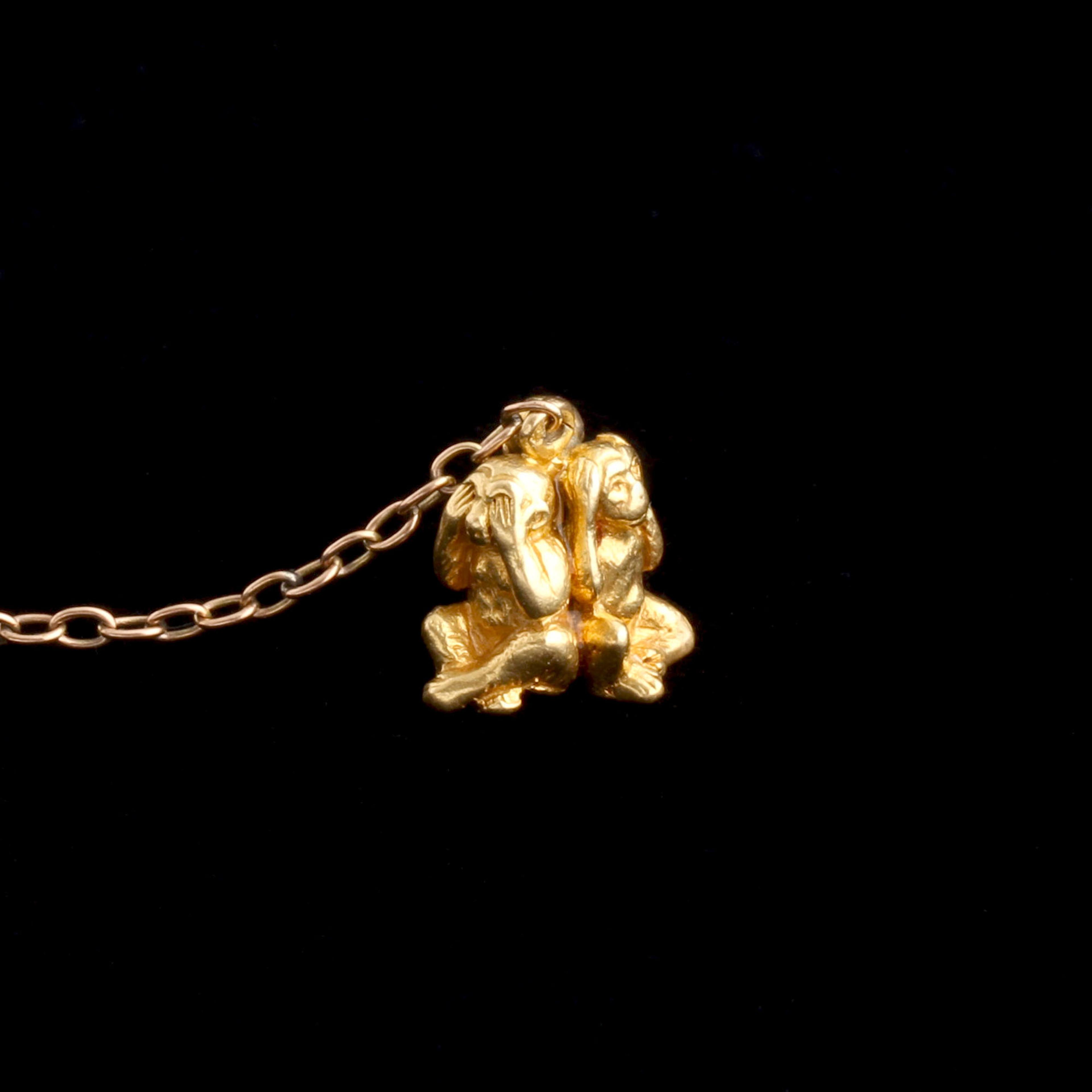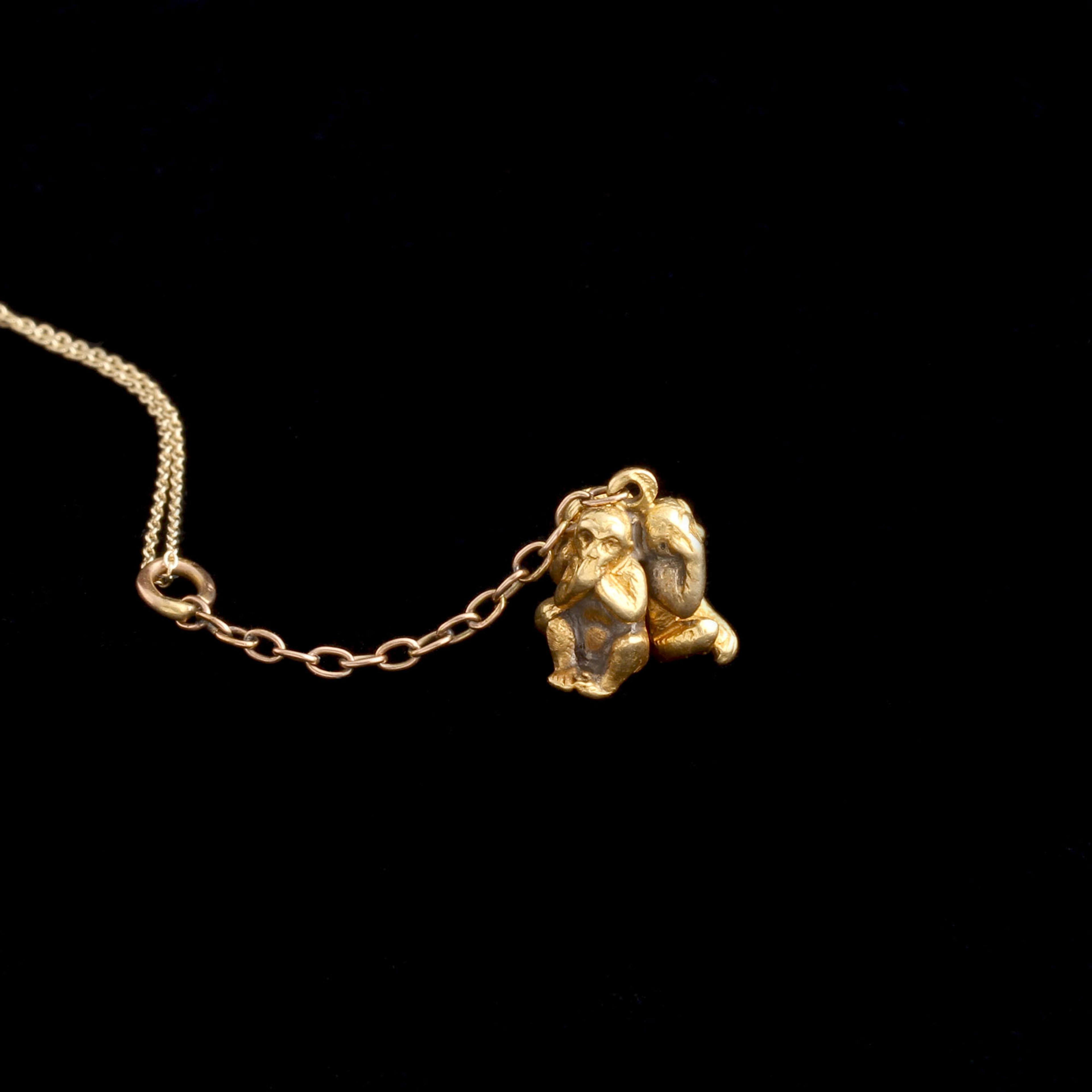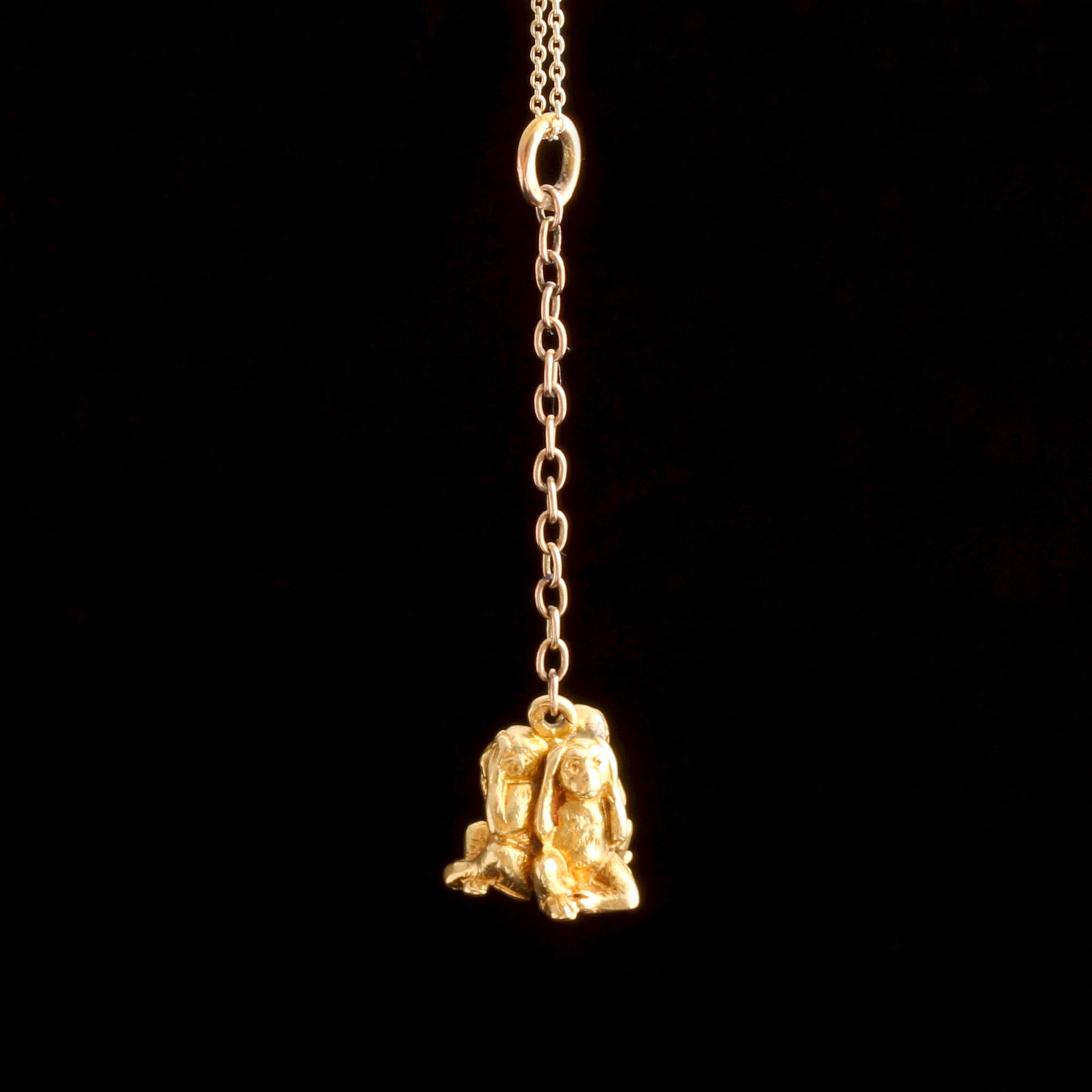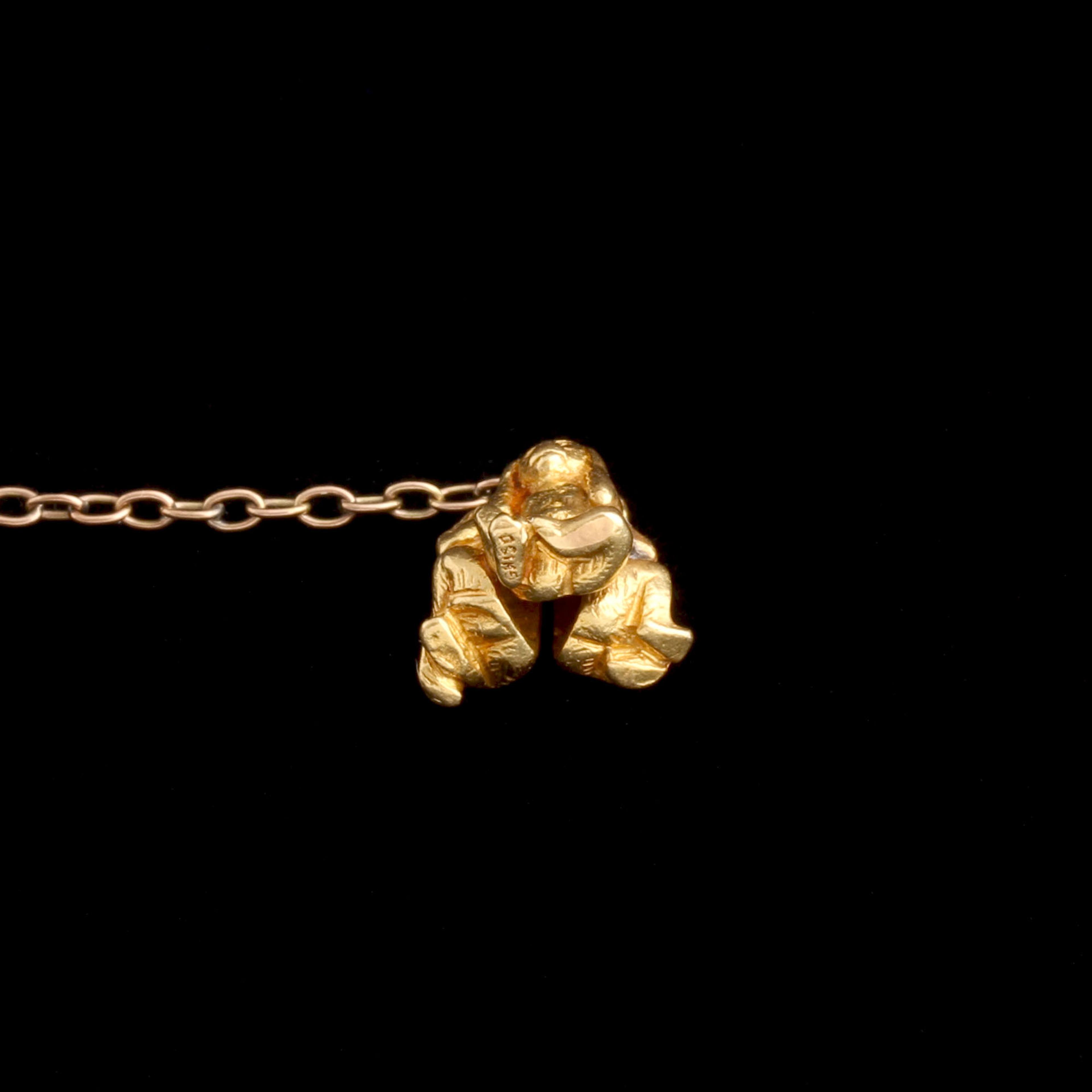Small statuettes of three monkeys like these have been popular in Britain since the 1900s; they are known to have been carried as lucky charms by soldiers in the First World War. They are identified with the proverbial saying ‘See no evil, hear no evil, speak no evil’, first recorded in 1926 and now generally used sarcastically against those who - through selfishness or cowardice - choose to ignore some wrongdoing. The Wise Monkeys originated in Japan, where they have been known since the 16th century; statues of them are set at crossroads in honour of Koshin, the God of Roads, whose attendants they are. There, their slogan is Mi-zaru, kika-zaru, iwa-zaru, ‘No seeing, no hearing, no speaking’, with a pun on Japanese for ‘Monkey’, and it is used to teach prudence and purity. This pendant, made in the Deco era, bears the Ghiso makers mark (they're a French jewelry company founded in 1907.)
thedetails
- Materials
18k gold (tests), new 14k gold chain
- Age
c. 1920
- Condition
Very good
- Size
1 5/8" length including chain and bale, 3/8" monkeys, 18" chain
Need more photos?
Send us an email to request photos of this piece on a model.
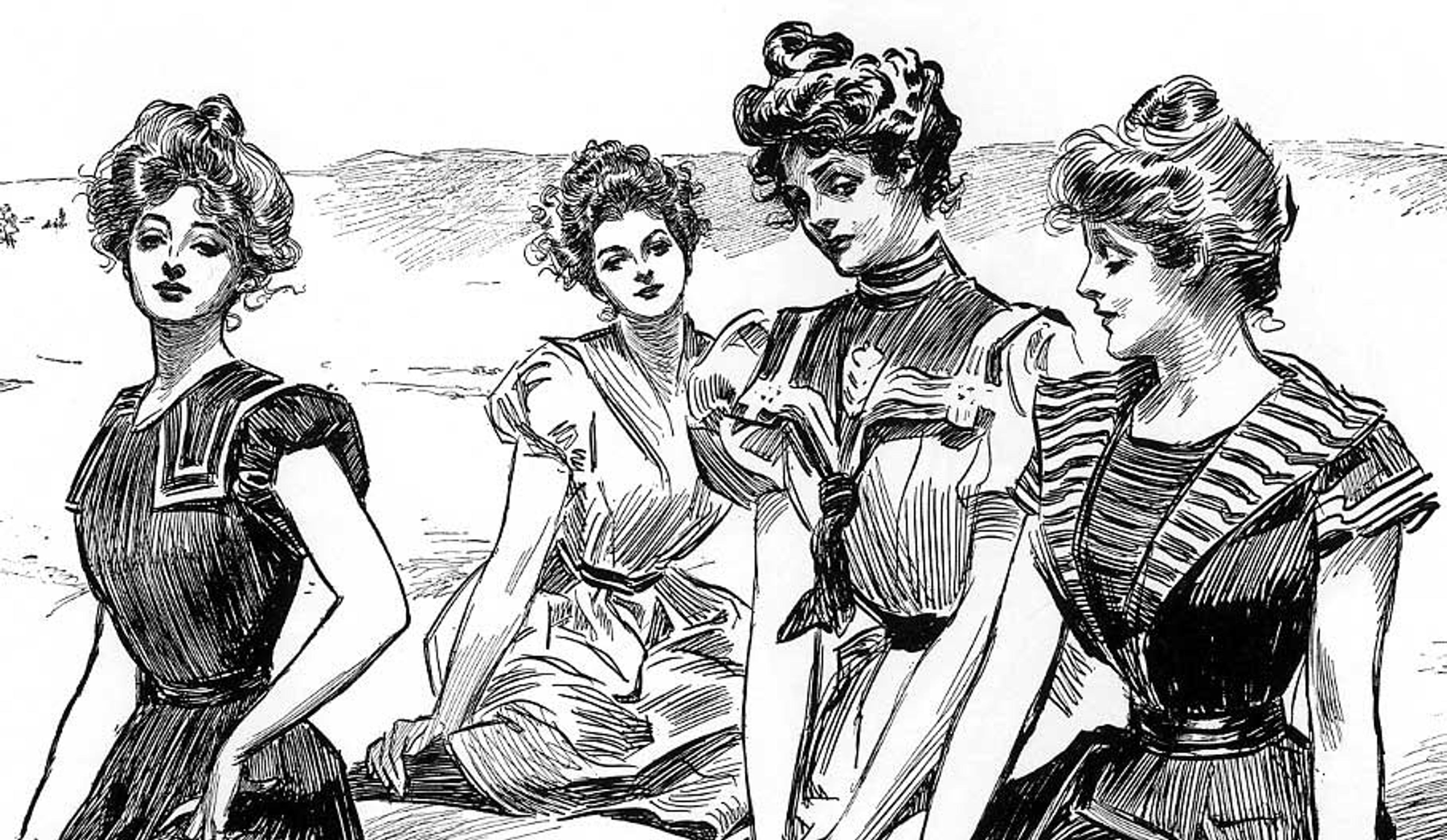
Aboutthe
EdwardianEra
1900 — 1910
The jewelry tended toward airy lightness, often in the form of lacy filigree. The world was changing rapidly, but lots of the jewelry still reflected the Victorian ideals of decorum and femininity. Ancient Roman and Greek influences remained popular. “White” jewelry became popular as plentiful deposits of platinum were discovered in Russia and improved smelting technology made it possible for jewelers to work in the noble metal. Platinum was seldom used by jewelers in earlier years owing both to its scarcity and high melting point. The jewelry trade took advantage of its rigid strength to create opulent openwork settings for increasingly brilliant diamonds. The old European cut was perfected, rounder and squatter than old mine. This took stone-cutting one step closer to the mathematically perfect round brilliant cut, which is the most popular diamond cut today. The now-iconic square Asscher cut was patented in 1902. Hot on the heels of platinum, the alloy mixture that produces white gold was formulated and patented in 1915 in New York City. With Europe in the grip of WW1, the American jewelry industry was poised to become a world leader and innovator.
please note:Terms of Sale
Antiques can be returned unworn and in original condition within 10 days of delivery for an exchange or refund minus the cost of shipping. Once a piece has been altered, including ring re-sizing, it is FINAL SALE.
